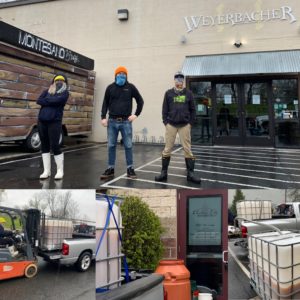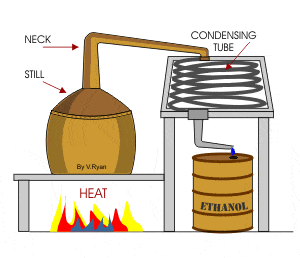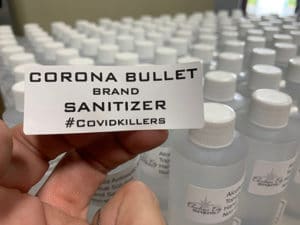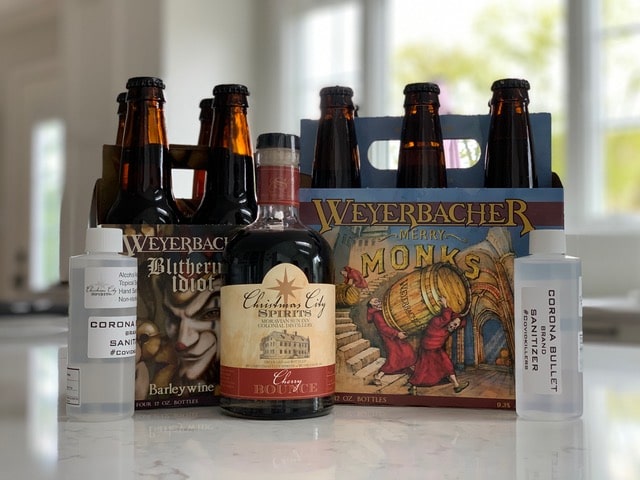First, let’s understand what we do as a company. We distill spirits. That means we use the process of distillation to extract the ethyl alcohol from a fermented product i.e. beer or wine and turn that into with whiskey, brandy, rum, vodka, etc… You know ethyl alcohol. The stuff that makes you a better and better time at a party with each sip? So it just happens to be that ethyl alcohol is the base of hand sanitizer (at least the version distillers are using).
Our process when making spirits is the same as making beer and wine and starts with fermentation. Fermentation is the process by which yeast converts sugar that’s dissolved in water into ethyl alcohol and carbon dioxide. This sugary solution usually starts with a grain for beer and fruit for wine. For beer, the starchy grain is cooked and the starch, which is just a chain of sugars wrapped together, is broken down into individual sugar molecules. For wine the fruit has naturally occurring sugar in it (think fruit juice). So once that sugary solution exists, yeast is added and they go into an orgy of replication which takes energy to achieve and that energy comes form the consumption of sugar. Through this process the byproducts are alcohol and carbon dioxide. Once done, the alcohol by volume is normally between 4-12% of the solution. So if your a brewer or wine maker, once this process is done, there might be some further processing for flavor, but for the most part you have drinking quality beer and wine. Now here’s where we come in.
As distillers, we take the beer we made and distill it into whisky or take that wine and make brandy or we can just take regular sugar and make rum. This is done by heating the beer, wine or sugar water with the alcohol in it in a still. Alcohol boils at 158F, where water boils at 212F. So if you heat up the beer, a lot of that the alcohol will “steam” off the water in a gaseous form before the water does. This gas comes up through the head of the still and is cooled in a condenser which is normally cooled with cold water. When you cool the steam it turns to liquid again, but now it’s more concentrated with alcohol. On a first distillation, you get about a 30-40% alcohol solution with the rest being water. If you distill that concentrated material again you’ll get even more concentrated alcohol. It takes us 3 distillations to get the alcohol percentage up to the strength we need which is almost 97% pure ethyl alcohol.

When Weyerbacher donated that beer to us, it helped us skip the step of fermentation and we go right to distillation. Once we’ve distilled that beer to the required strength of alcohol we can now make sanitizer. We follow the World Health Organization’s #1 Recipe for sanitizer. It is liquid, unlike the aloe-based version most are used to. To the alcohol we add glycol, an emollient which helps the product bind to the skin while also moisturizing the skin. A lot of makeup products have it and even some foods. We also add hydrogen peroxide (you know that stuff you put on cuts that bubbles) to get rid of any other spores or other nasties that alcohol doesn’t work on killing. We finish the product by getting it down to about 80% alcohol. If it wasn’t for the glycol and lower proof, the straight ethyl alcohol would evaporate too quickly to be as effective as it could be. We then bottle it, label it, and get it out to the front lines.
So there you have it. That’s why the donation we received was so helpful in what we are doing. It speeds up the process by over a week for each batch. We can’t thank the Weyerbacher team enough for their support as we fight the good fight until we can get on the other side of this. Their Tap room is open for to go purchase so please pay our covidkiller teammates a visit and support a local business.


